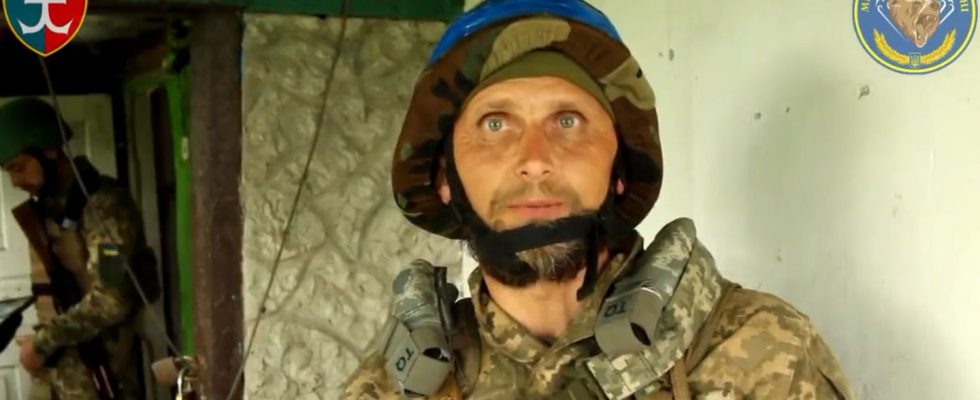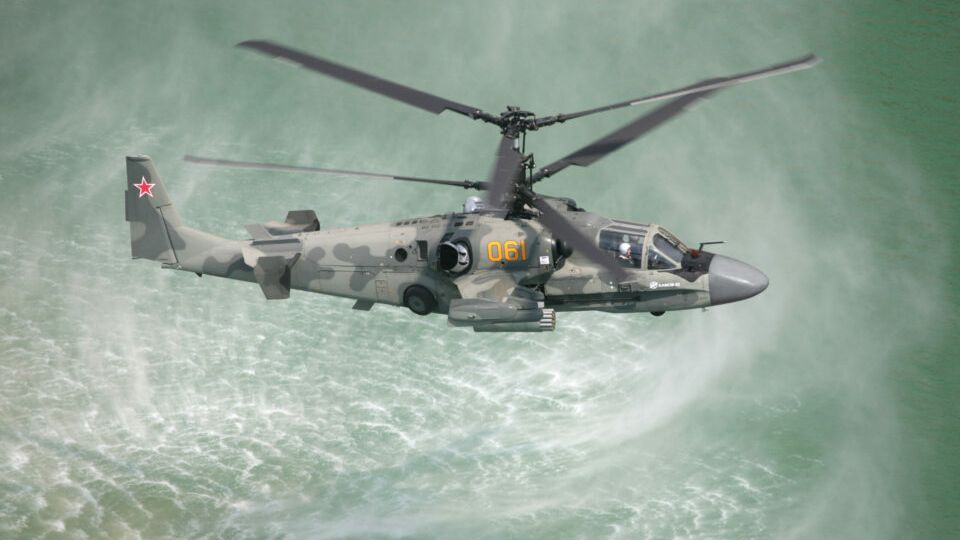war in Ukraine
The next meat grinder – why Russians and Ukrainians let more and more troops fight for four mini-villages
Soldiers from the 35th Marine Brigade in one of the liberated settlements.
© 35th Marine Brigade / Commons
In the Russian front salient at Vremevka, Ukraine was able to liberate the first villages. There has been a bitter struggle for the settlements for a week. Because through them leads the way to Russia’s main line of defense.
Ukrainian forces have been attacking the Russian front line for over a week. The fighting is currently concentrated on a small corner of the Donbass – the Russian salient at Vremivka. There the Ukrainians suffered bitter defeats. They lost a significant proportion of their mine clearance vehicles, as well as Bradley armored personnel carriers and German Leopard 2 tanks being destroyed before they were even within firing range of the enemy. It was there, however, that the first significant break-in into the Russian positions took place. The villages of Vremivka, Neskuchne, Storozheve, Blahodatne and Makarivka were liberated. All places are small settlements. They are lined up like a string of pearls on a river (Mokri Yal River). All names follow the spelling on Google Maps. In total, the Ukrainians penetrated about five kilometers deep into the Russian-held territory.
More troops for a front tip
Both sides have been bringing in more troops since Sunday. Kiev is said to have moved infantry and armored brigades into the area, as well as additional artillery – these units were previously used as near-front reserves in other parts of the front. They are not part of the strategic reserve reserved for the great offensive strike. But even so, more and more troops are involved in the fight for very insignificant towns. Why are these places suddenly so important?
These places play the same role as Bakhmut, only on a smaller scale. In and of themselves, they have no strategic importance; it arises from their role in the respective defense system. Bakhmut held out for a long time in Kiev because the city lies like a breakwater in front of the last major line of defense in the Donbass. To protect this line, Bakhmut had to be defended. The small towns now belong to the outer perimeter of the Russian fortress system. Kiev must capture them in order to attack the main Russian defense line. There are still 10 to 15 kilometers between Kiev’s peaks and this line.
Position for the actual attack
There are other places along the river. The Russians have established a defense in Staromajorske, and Staromlynivka is even further south. This location is the real target of this phase of the offensive. When Kiev’s forces reach Staromlynivka, Russian positions north of the main line of defense will collapse. Kiev would then itself have a springboard for further operations, because several streets converge in the town. Controlling the few developed roads in the area is key for the military. Russians and Ukrainians depend on them to supply their troops.
Kiev has and will continue to try to advance with armored troops in the open country east of the river and towns, thereby bypassing the Russian positions along the river and threatening them on the flank. So far the Russians have withdrawn.
Fight from afar
From the few images that can be seen, the battles are very different from those at Bakhmut. While in the small town every house was fought over in the smallest of spaces and at short distances, hand-to-hand fights are apparently avoided. The reason is simple: the Russians are trying to fight the Ukrainian formations from a distance with mines, artillery, drones and guided missiles. If they succeed, the surviving Ukrainians must withdraw. If the Russians fail to fight the convoy from afar, it would be pointless for infantry to engage in combat against an armored column in open country. She withdraws. If she fails, the position will be shot down. So far, the Russians have sought success in counterattacks, which they prepare with artillery and bombardments. At Staromajorske and even more so at Staromlynivka they are likely to increase resistance.
Ukraine needs success in this area to get a springboard for the big hit, so the small salient is sucking up more and more troops. The Russians, on the other hand, will try to engage Kiev’s units in battles in front of their main line for as long as possible. It is to be expected that places will change hands more frequently and that the battle will remain more mobile than in Bakhmut. Maps with clear lines suggest a clarity of control that doesn’t exist.
Back and forth of the front course
These days the Russians are trying to drive the Ukrainians out of some of the villages. Not by storming the towns, but by hitting the Ukrainians with artillery and bombardments. From a ridge to the east of the river, you can see the villages and the road at the bottom of the valley. Kiev’s troops, on the other hand, will try to pinch the Russians coming from the east from the town of Rivnopil’, so that they will have to evacuate the position on the hill. If Moscow succeeds, the Ukrainians will be thrown back again. If Kiev wins, Staromajorske will be the next target.
Nothing can be said about the chances of success at the moment. However, the parallels to the battle for the Kursk front arc, Operation Zitadelle, are striking. Russia is using the same fatigue strategy as Stalin – in a contemporary, smart version. Then as now, the Kremlin’s calculus is to exhaust the aggressor’s best troops before they reach Russia’s last line of defence. Kiev must avoid this mistake at all costs.





